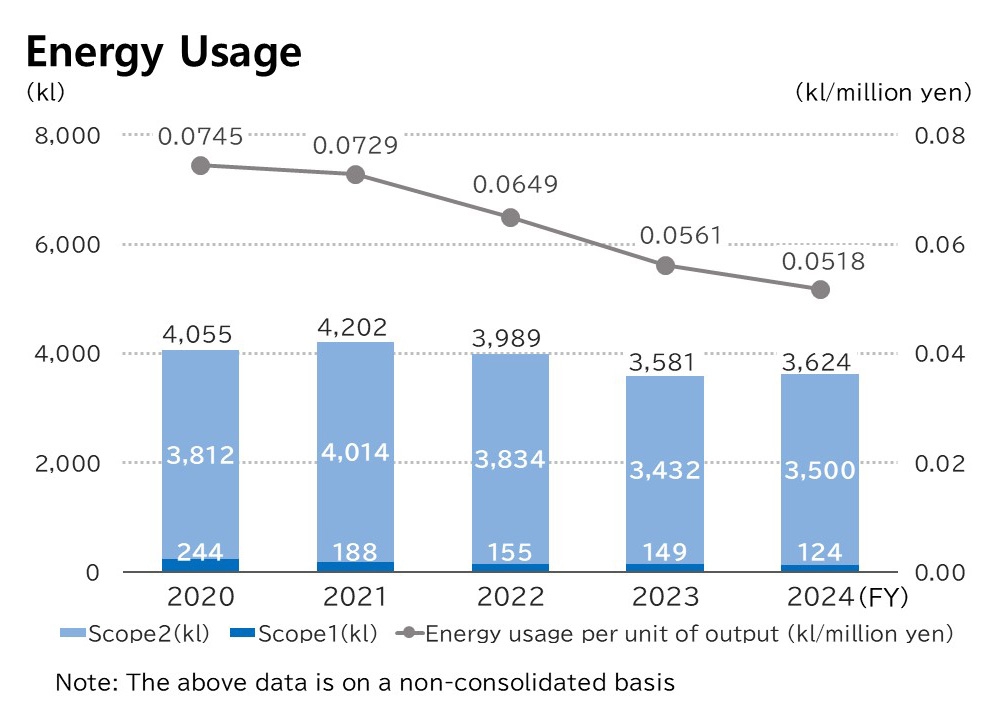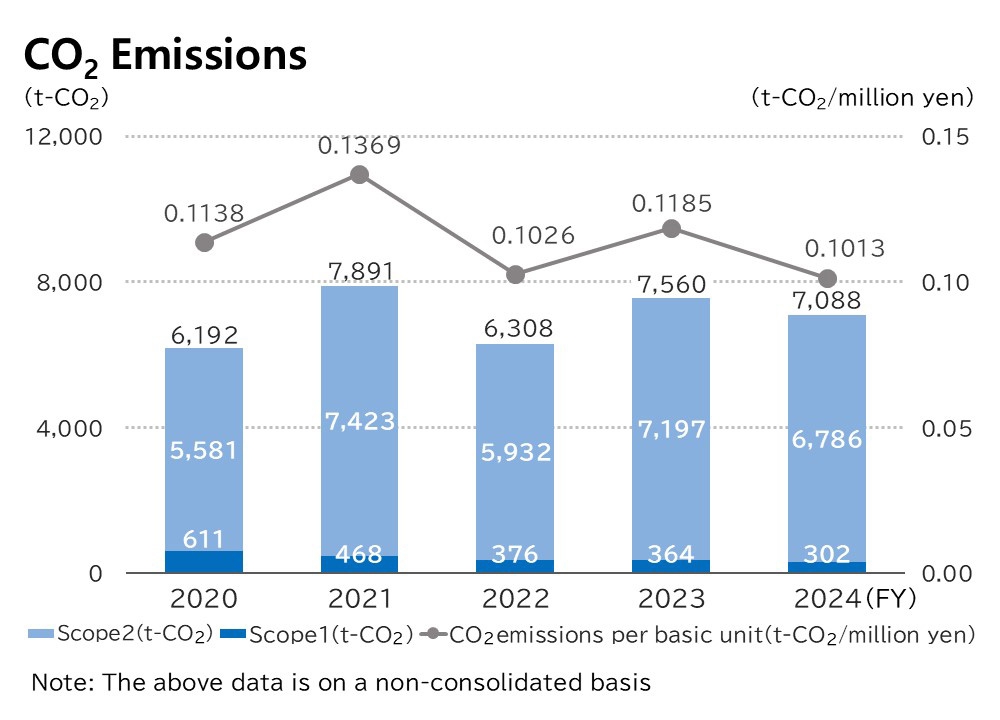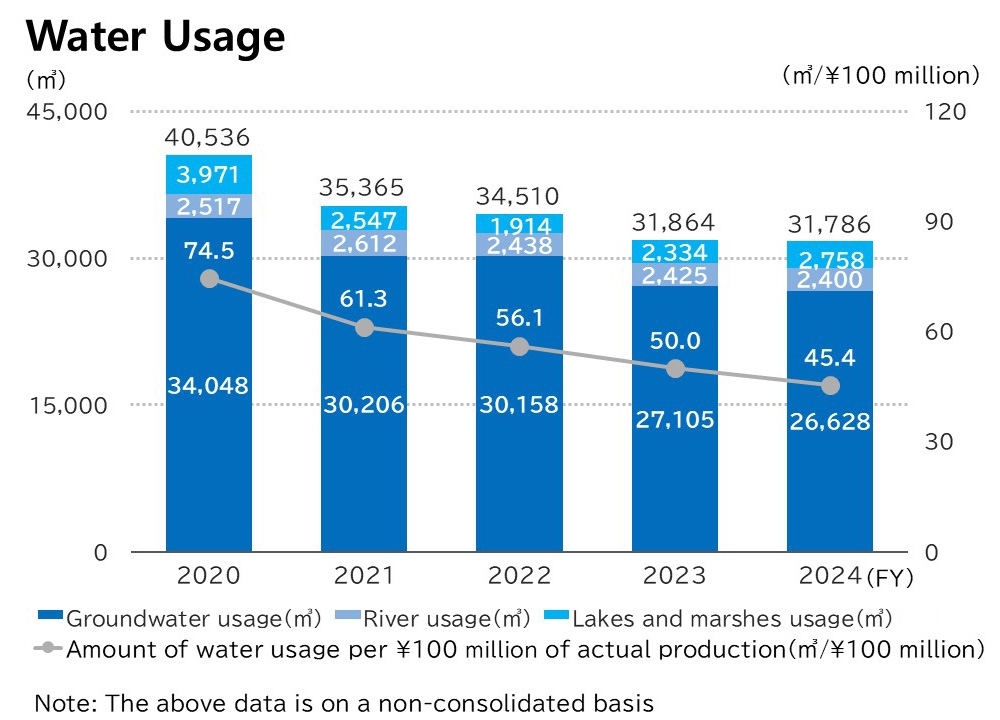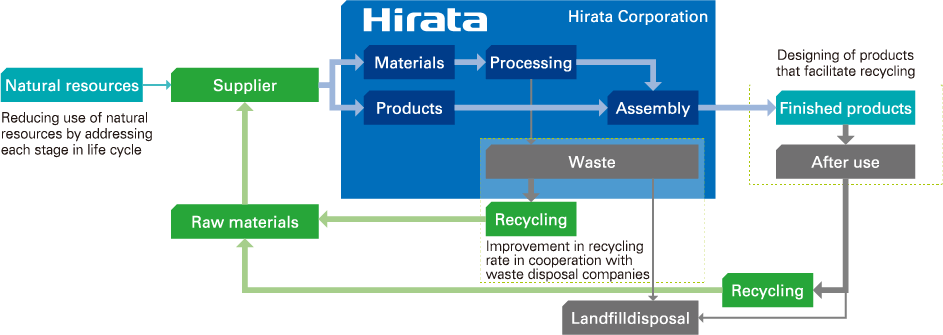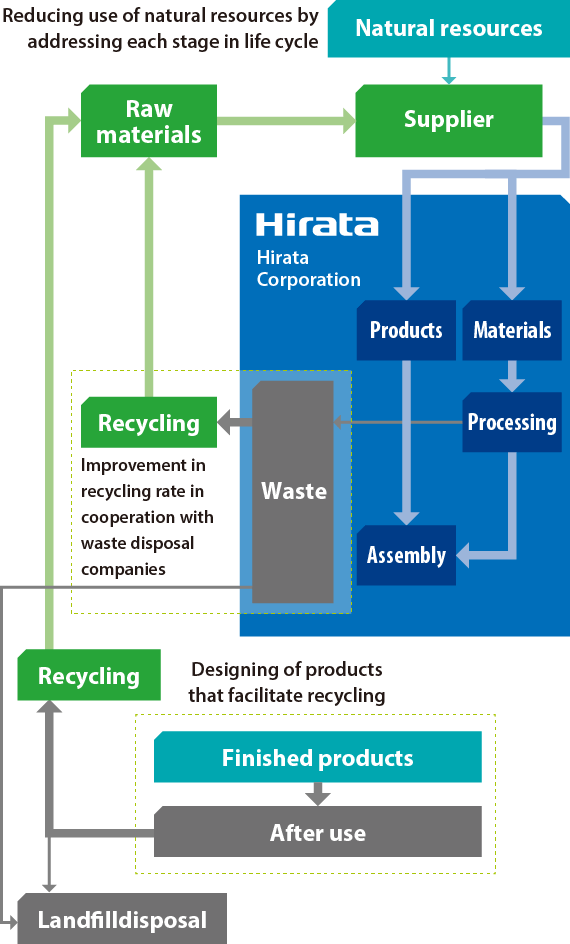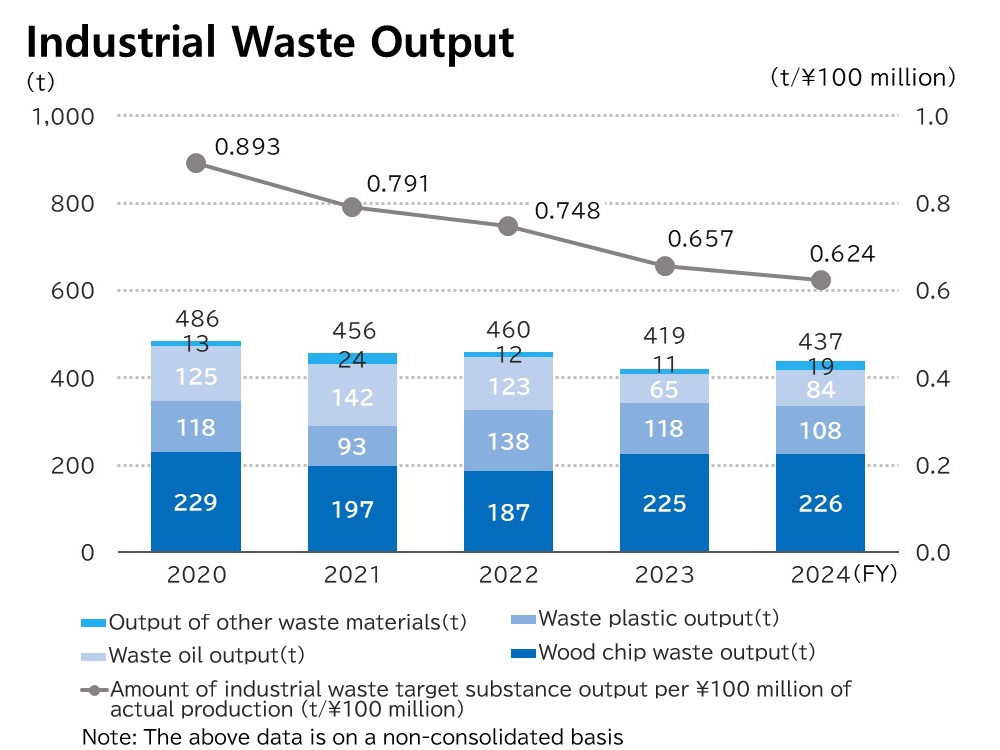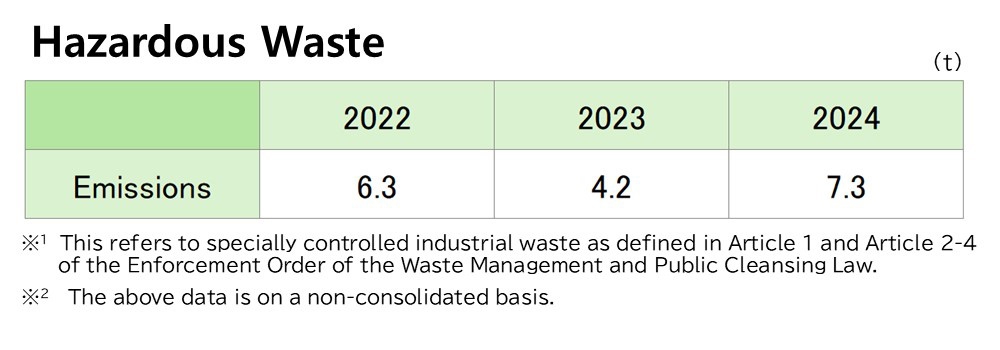Environmental Load Reduction
Changes in Energy Consumption/CO2 Emissions
The Company is working to rationalize its energy use based on the Act on the Rational Use of Energy and Shifting to Non-fossil Energy (Energy Efficiency Act). Using FY2020 as the base year, we set an environmental target to reduce energy usage by 4% by FY2024. In FY2024, we achieved a 30.5% reduction in energy consumption and an 11.0% reduction in CO₂ emissions, both exceeding our targets. We will continue our reduction efforts to minimize environmental impact.
Efforts to Conserve Water Resources
To conserve water resources, the Company is reducing water usage and monitoring factory wastewater. As an initiative to reduce water usage, we reviewed cooling water circulation equipment settings in fiscal 2021 in order to reduce the amount of cooling water used at the Kumamoto Plant. After making changes, we were able to further reduce the amount of water used. With regard to plant wastewater, we conduct wastewater analysis at all plants annually to confirm that they meet legal and in-house control standards.
Approach to Resource Recycling
To help in the realization of a sustainable society, we are working to create products that show we have given consideration to resource recycling at each stage of the life cycle (the procurement of materials and parts, design, production, and disposal after use). Through eco-friendly design, we are promoting the reduction of raw materials used in product manufacturing and the provision of products that can be recycled at the time of disposal.
Efforts to Reduce Industrial Waste Outputs
Managing Chemical Substances
To respond to chemical substance-related laws and regulations in Japan and overseas, including the European RoHS Directive1 and the REACH Regulations2, we will strengthen the management of the chemical substances contained in our products.
We ask our suppliers to submit information through chemSHERPA3 and cooperate with our surveys of the chemical substances contained in our products. We will continue to work on managing the chemical substances contained in our products.
The chemical substances used in-house are evaluated before use and, based on the evaluation results, we undertake management necessary to comply with laws and regulations.
1 Regulations on chemical substances in EU
2 Chemical substance management regulations in EU
3 Format for providing data on chemical substances contained in products in a supply chain

